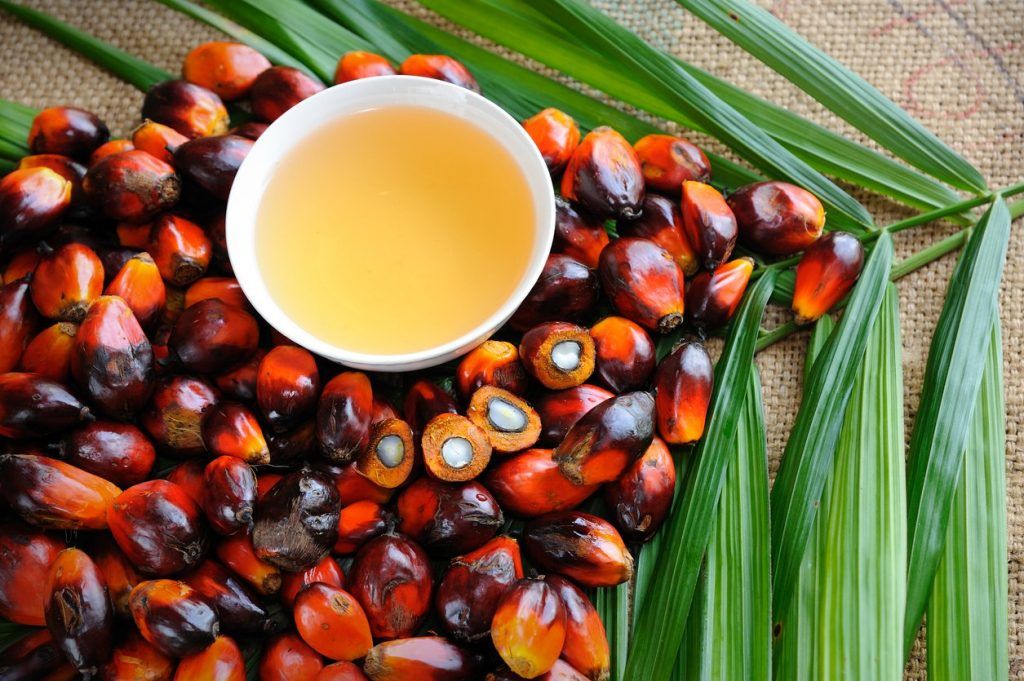Get to know Magnesium, an Important Element in Oil Palm Growth

Get to know Magnesium, an Important Element in Oil Palm Growth – Photo by Pinterest
(Istimewa)Nutrients are an important component in plant growth. Along with light, water, and suitable temperature, plant nutrients give the plant fuel to grow and produce various fruits, vegetables, grains, and other necessary products. Magnesium (Mg), a macro element needed by plants, has a wide range of roles in plant growth and development.
One of the roles magnesium plays a big part in is during photosynthesis. Photosynthesis is a process of turning light energy into chemical energy that is crucial for plant growth and crop yield. Magnesium is needed during this process for chlorophyll to capture energy from the sun. As a result, magnesium helps to give plants its green color and provides food for the plant itself.
Other than helping the process of photosynthesis, magnesium also plays other roles in plant growth. Starting during the seed germination stage, magnesium strengthens cell walls and provides increased energy for growth. Magnesium is also important for activating enzymes and aids in phosphate metabolism.
Magnesium can be found in the soil depending on multiple factors such as climate and agricultural system and management; the crop type, cropping intensity, and rotation along with fertilization practice. It can also be expected to exist in varying amounts depending on the types of soil. A tropical and sandy soil is expected to have a low amount of magnesium, while soils that generally have a high clay content such as saline soils or peat soils tend to have a higher amount of magnesium.
Magnesium requirement for oil palm
Oil palm is one of Indonesia’s largest commodities, this plant produces crude palm oil (CPO) that can be found in any household as cooking oil, margarine, and soap. It also produces palm kernel oil (PKO) that can be found in cosmetics and pharmaceutical products. Growing oil palms with high oil yields requires a balance of nutrients and an understanding of the specific nutritional requirements.
Large quantities of magnesium are needed for oil palm to maintain photosynthesis and frond development. It also plays a role in increasing the number of fresh fruit bunch (FFB) and fruit weight, therefore it also increases oil content. Magnesium also helps with the movement of other nutrients such as nitrogen (N), phosphorus (P), and potassium (K) into the plant through cell walls. All of which play an important role in the development, health, and yield of oil palm. Lack of magnesium can mean the decreasing number of fresh fruit bunch and therefore reduces oil production.
Symptoms of magnesium deficiency in plants
Lack of magnesium in plants can disrupt the photosynthesis process and the overall development of plants. Without sufficient magnesium, plants will reduce the amount of chlorophyll in older leaves and move them to younger developing ones, therefore resulting in plants with symptoms such as chlorosis. Chlorosis is a condition where plants have insufficient chlorophyll resulting in yellowing leaves.
For oil palm, magnesium deficiency is also called “orange frond” and can be seen through the discoloration of its fronds that are exposed to sunlight. The leaflets (pinnae) of older fronds will show yellow-green chlorosis starting from the tips and progressing towards the base of the leaf, this is because magnesium is translocated from older to younger leaves. With a severe deficiency, the pinnae will turn dark yellow, to bright yellow and eventually become dry. The shaded fronds however remain green. This is why magnesium deficiency can also be called “sun-scorch”. Magnesium plays a big part in producing fresh fruit bunch (FFB) on oil palm. Therefore, if the oil palm suffers from magnesium deficiency, the oil production of the oil palm can decrease.
This deficiency could occur due to insufficient uptake of magnesium. The chemical and physical properties of the soil can also be the cause of magnesium insufficiency. Sandy soils and soils with low water storage capacity can also cause magnesium deficiency due to how easily nutrients are leached in these types of soils. While soil with high amounts of calcium and ammonium nitrate can also contribute to magnesium deficiency.
Fertilizer Recommendations for Production of Fresh Fruit Bunch and Higher Yield of Palm Oil
Fertilizer plays a big role in supplying nutrients for plants. Especially when the soil where the plants are planted is lacking in nutrients. Depending on the physical and chemical attributes of the soil, fertilizer can be adjusted according to nutrients already available in the soil.
For a high-yielding oil palm, oil palm needs four main nutrients, nitrogen (N), phosphorus (P), potassium (K), and magnesium (Mg). It is advisable to use a fertilizer with a mix of the four nutrients or better known as NPKMg fertilizers. This fertilizer is readily available by the name Pupuk NPK Pelangi produced by Pupuk Kaltim (East Kalimantan). General application of the fertilizer with a ratio of 15:15:6:4 can be applied during weeks 14-24. But when using ones with a ratio of 12:12:17:2 then the application can be done after week 26 with a two-week interval in between until week 52. Each four of the nutrients available in NPK Pelangi plays a part in increasing the production of oil by increasing the number of bunches, FFB yield, oil content, and bunch weight.
Other supplementary nutrients needed to increase oil palm yield are calcium (Ca) for health, sulfur (S) for high yield along with nitrogen, boron (B) for root development and fruit set, zinc (Zn) for supporting new tissue development, and copper (Cu) to help maintain growth. All of which can be adjusted according to plant needs and the nutrients available in the soil.
